So there I was, driving along in my automobile, no baby beside me at the wheel.....pondering:
Where to plant my zucchinis this year - they didn't do well last year and I wanted to make sure I had a good crop this year...
And I thought of this patch of ground I hadn't decided what to do with yet.....and these rubbish bins I've got doing nothing....and that old ladder on the roof of the shed awaiting a creative project.....and that half bale of pea straw that needs using up......and that half finished compost in that pile......and I dreamed up this.......(details below):
| It started with this patch of clover - originally lawn 2 years ago, it had been turfed and dug over, and planted in yacon two seasons ago, and popcorn last year. It had been mulched with sawdust/horse manure from a local racing stables, which resulted in a lush growth of clover, which likes to grow where nitrogen boosting is needed. But I hadn't decided what to do there this year.....I had had a few ideas but discarded them for one reason or another. Now with this new scheme in my brain, I first mowed the clover, dropping it to compost in place. Then I started laying out cardboard, salvaged from the bins at the local supermarket, with all tape etc stripped off. First I laid out one of the rectangles that would become a raised bed, wet down the cardboard, and spread some used compost from last year's potato bins on top. Then I continued to lay out cardboard until the whole area was covered, with spent compost where the two beds would be, and bark mulch around the outside and through the middle for paths. Next, I went and mowed some lawns, and spread the clippings over each bed. I took two 60 litre rubbish bins, and drilled 10mm holes in the sides just above the base all round, then positioned them opposite each other each side of the path, on the beds. I temporarily placed a large brick in the bottom of each to stop the wind knocking them about. I added more layers to the beds with some fresh home-made compost, and a sprinkling of various goodies I had in the shed - sheep pellets, rock dust, quick and slow release vege foods. Next a layer of almost completely composted woodchip. And then I covered both beds with some left over pea straw. I had a old 4m wooden ladder a neighbour had given me. My husband and I cut it in half and evened it out so each half had a rung the same distance from the top. We placed each half upright in a bin, and secured them across the top with two pieces of scrap wood. I filled each bin 3/4 full with incompletely digested compost. |
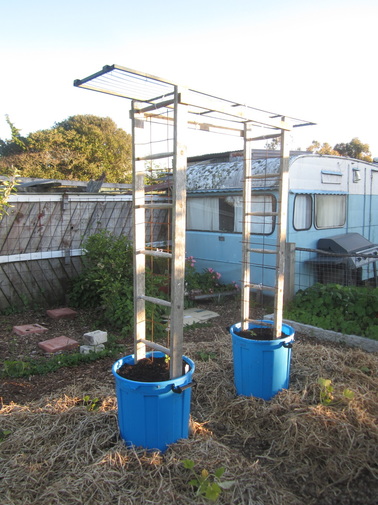
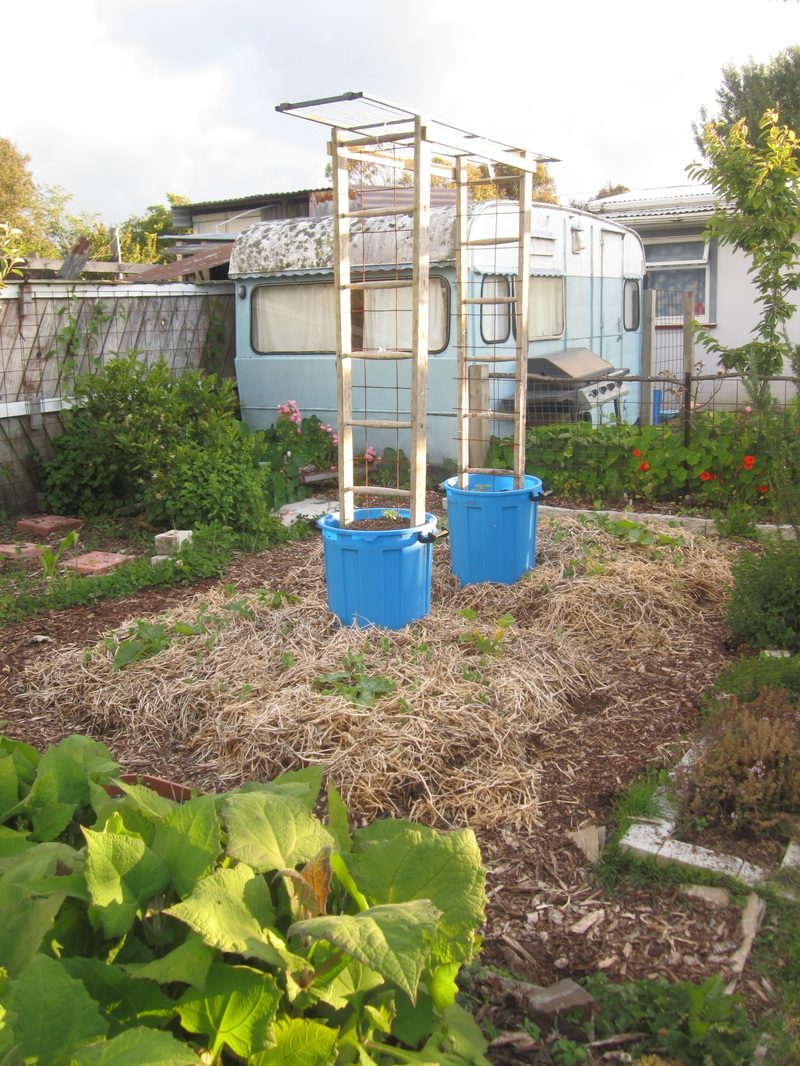
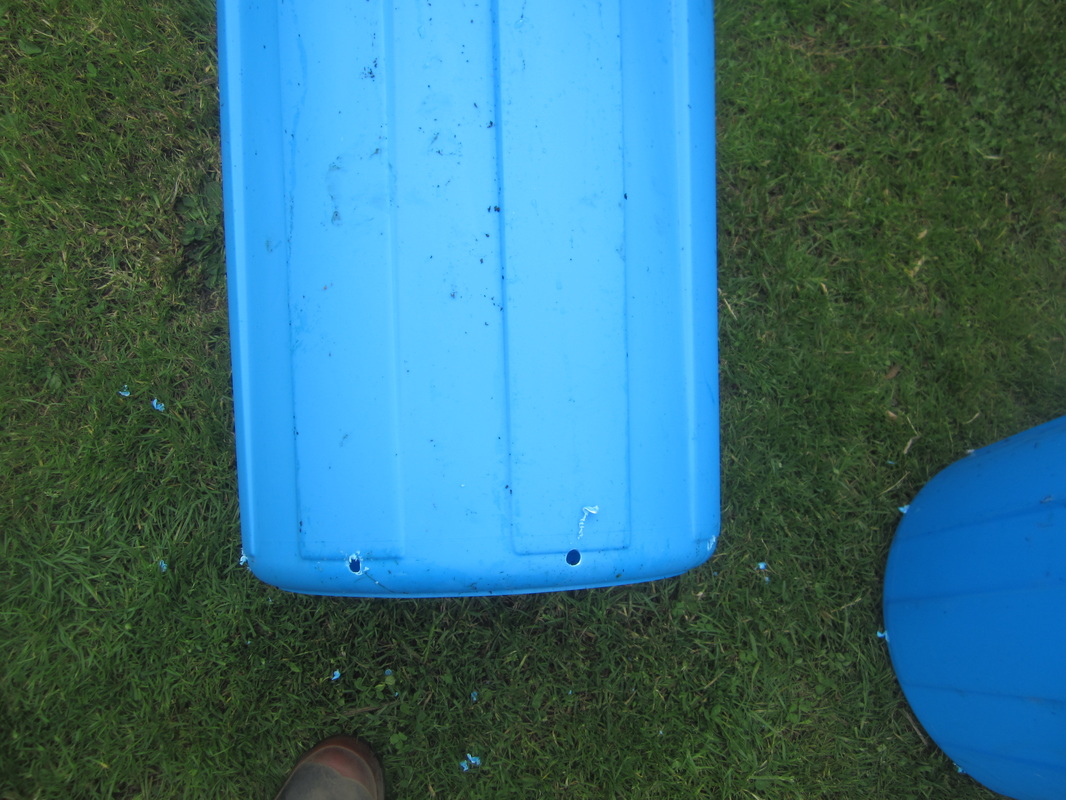

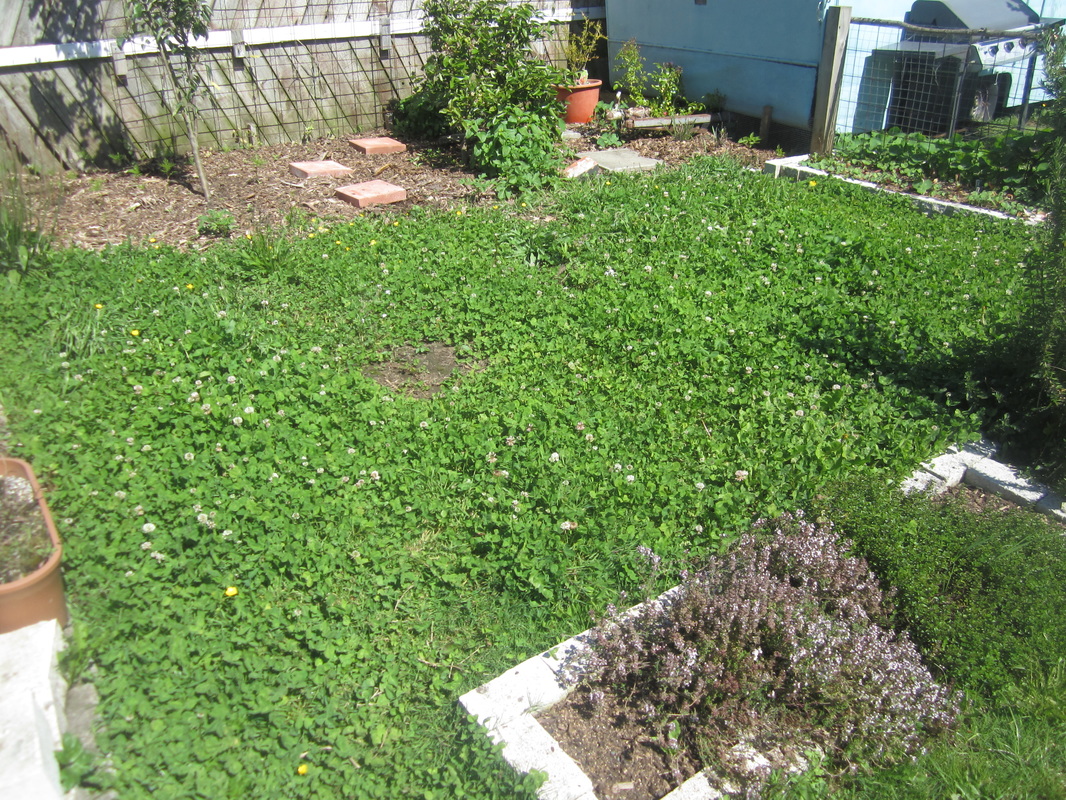
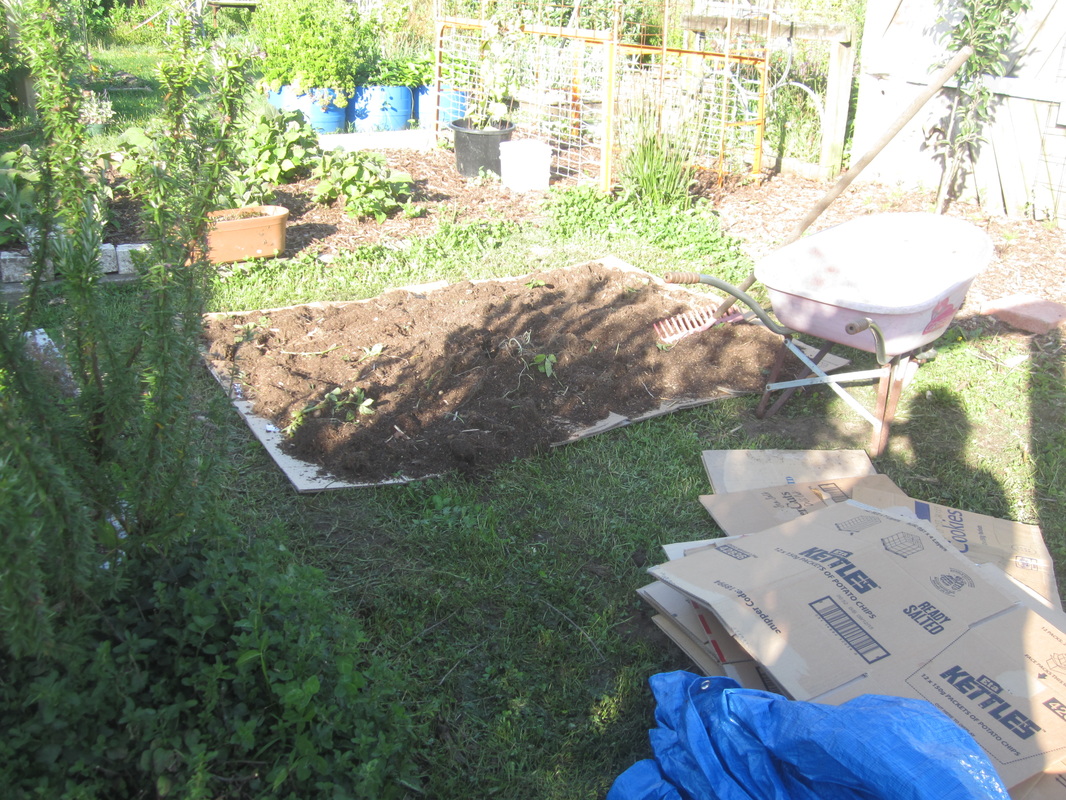
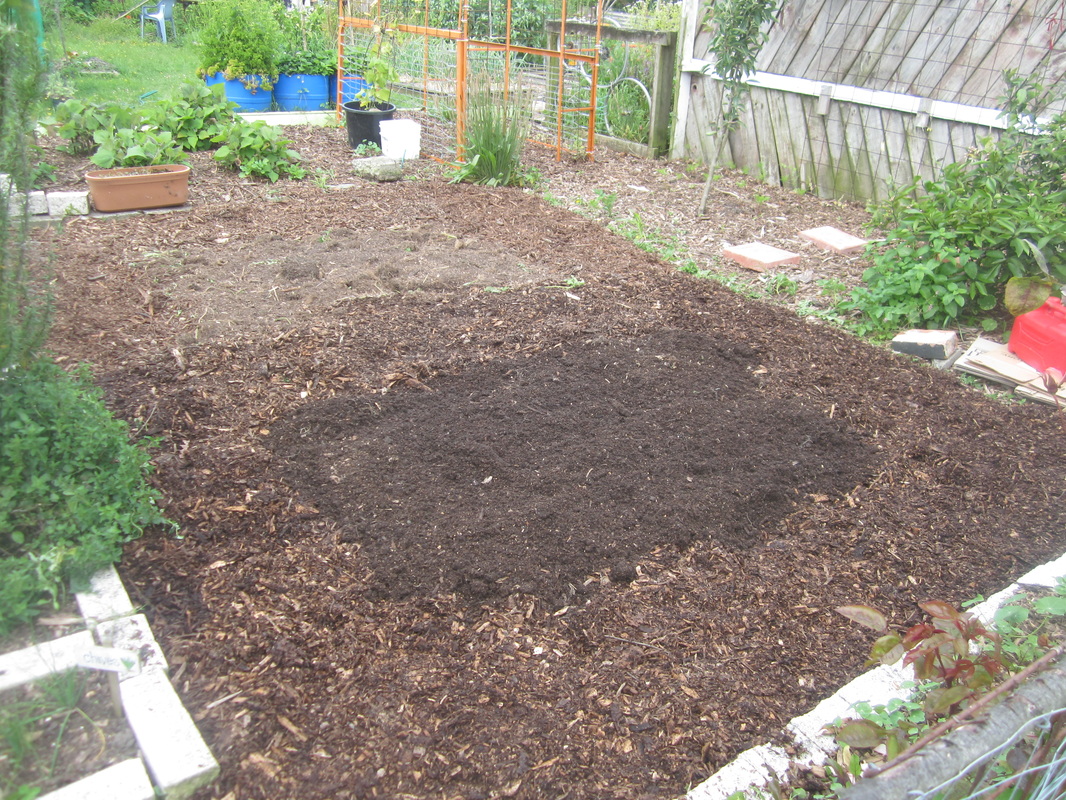
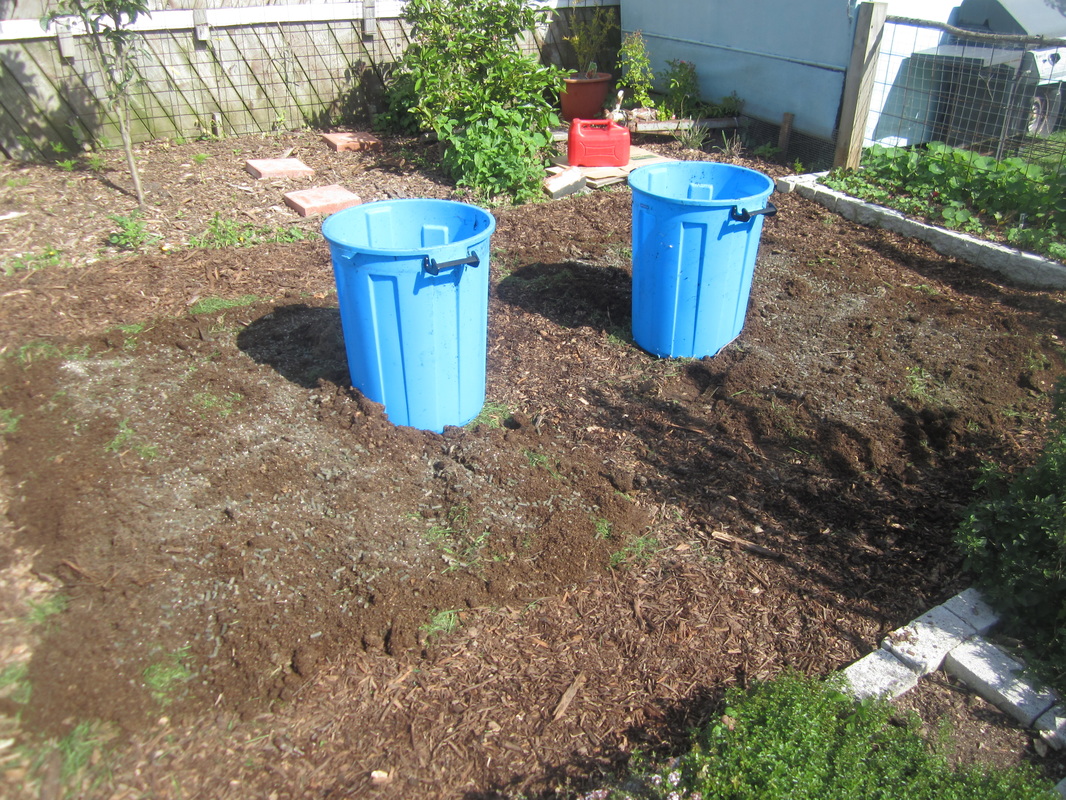
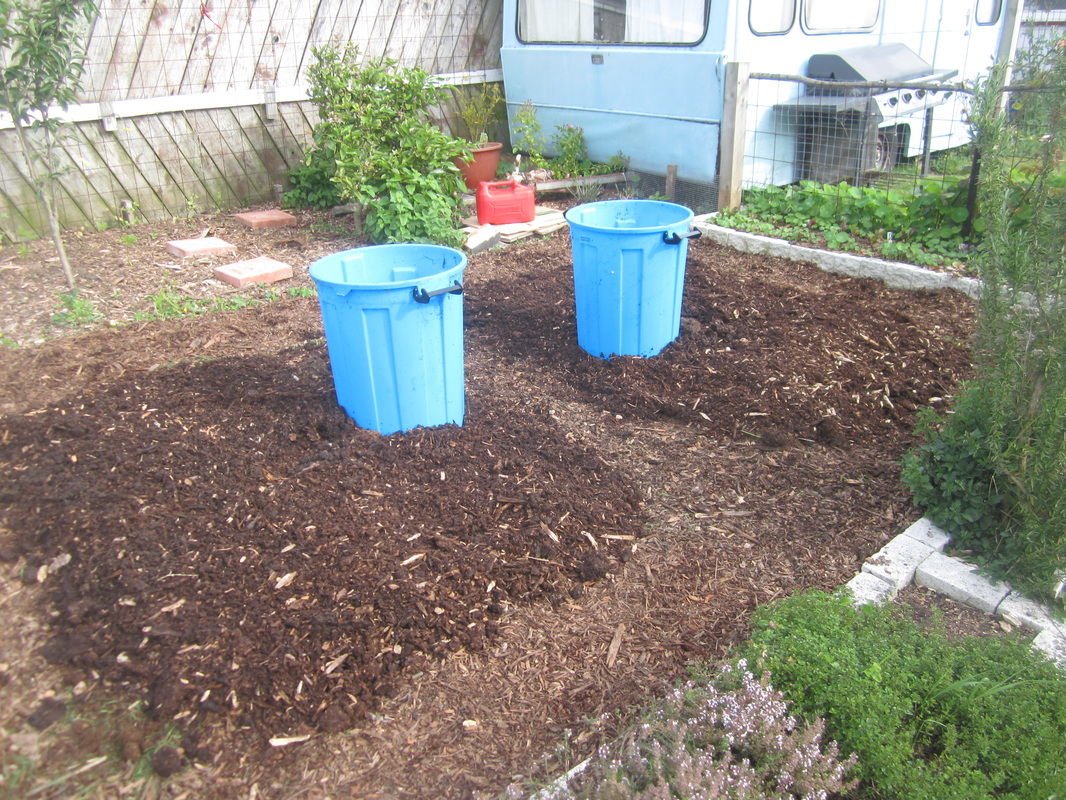

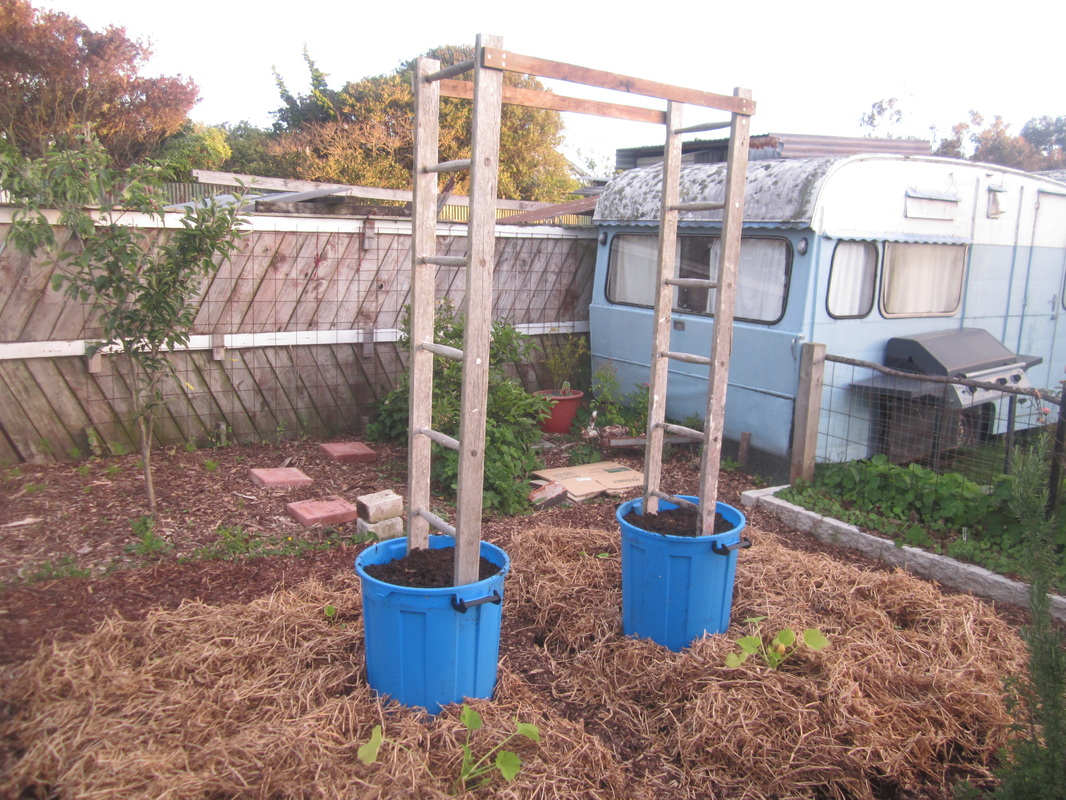
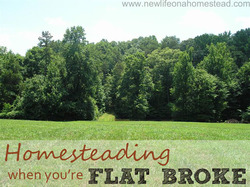
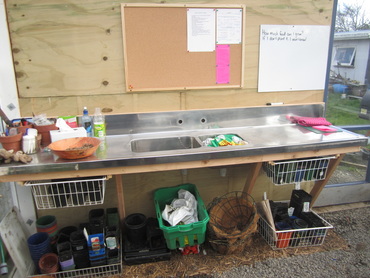
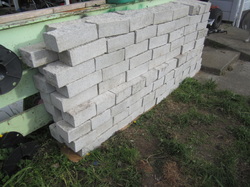
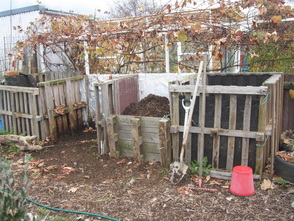
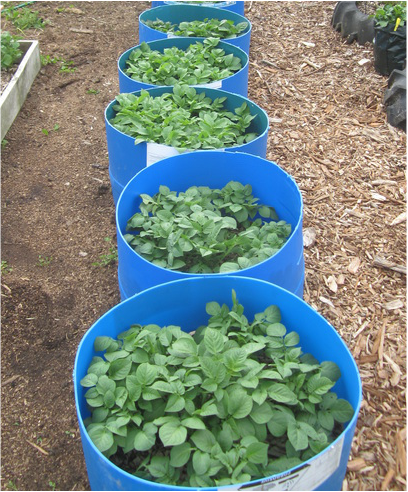
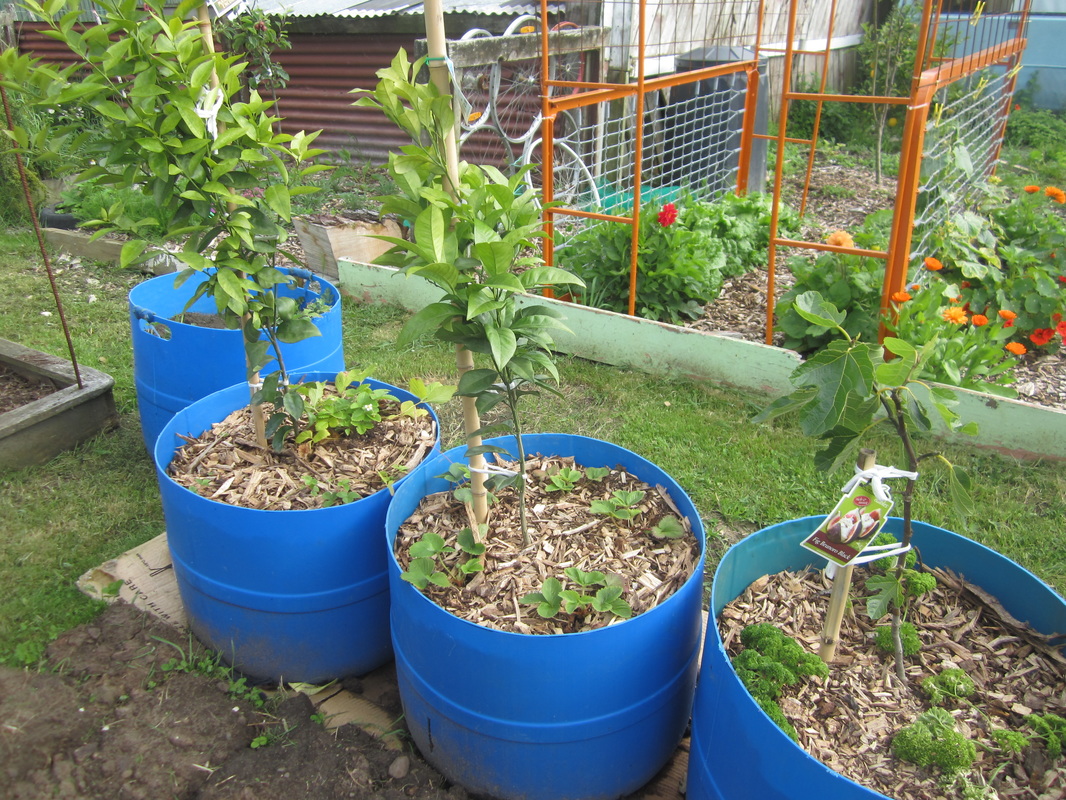


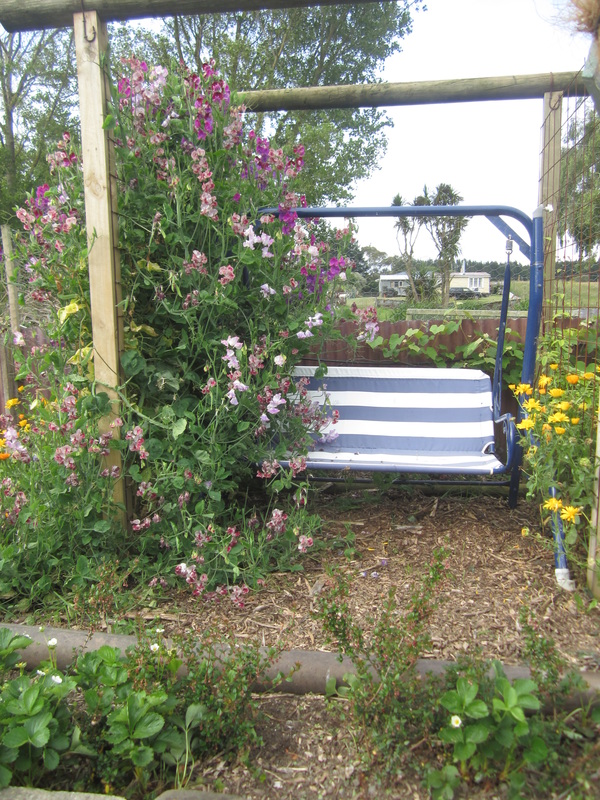
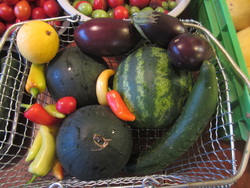
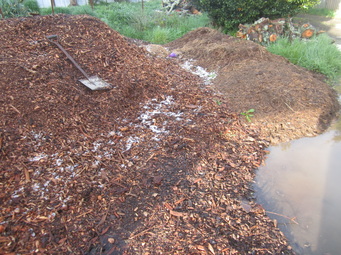
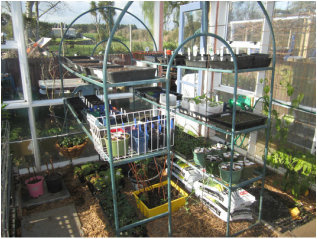
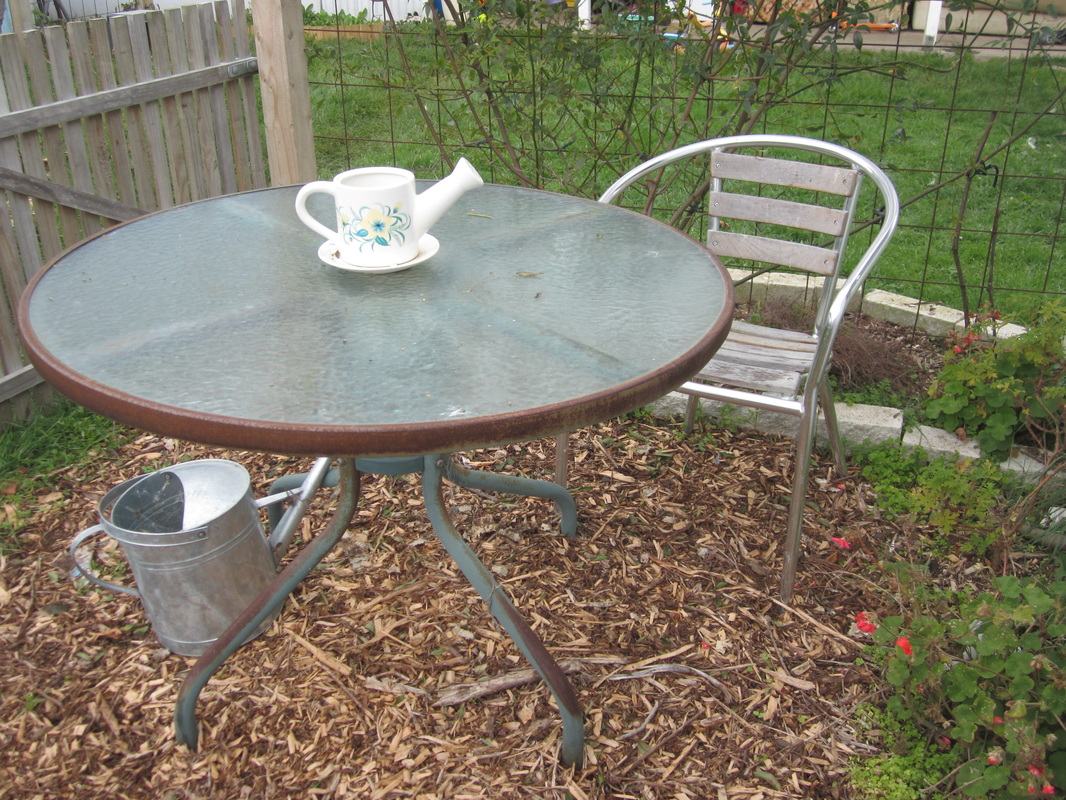
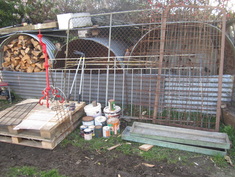

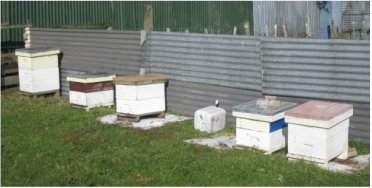
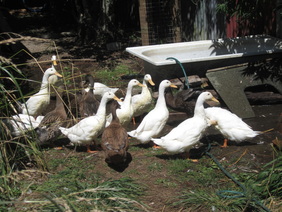
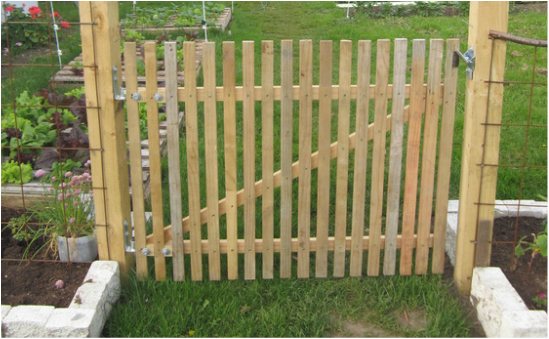
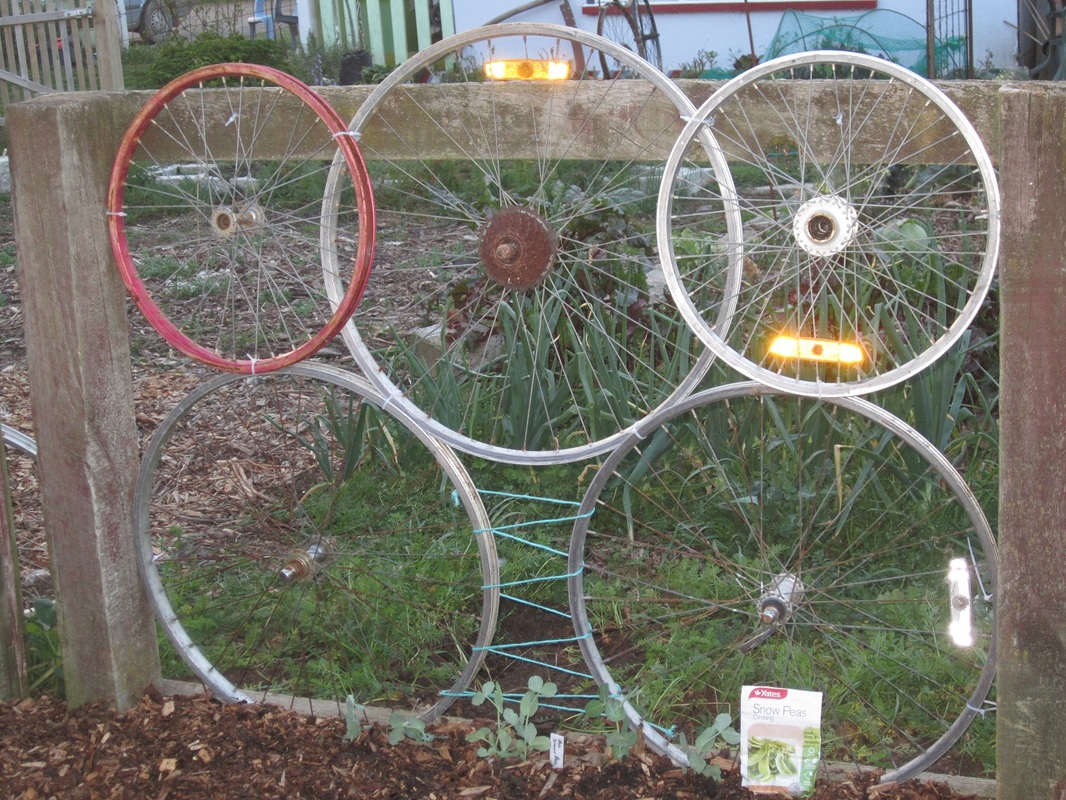
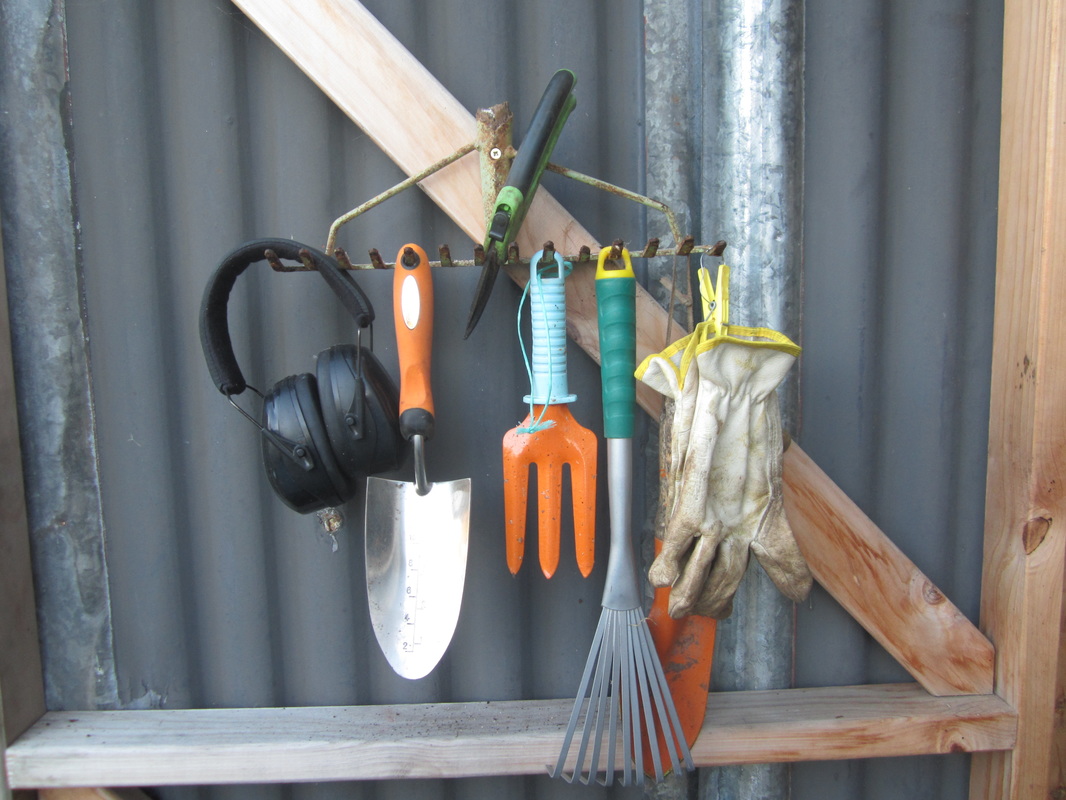
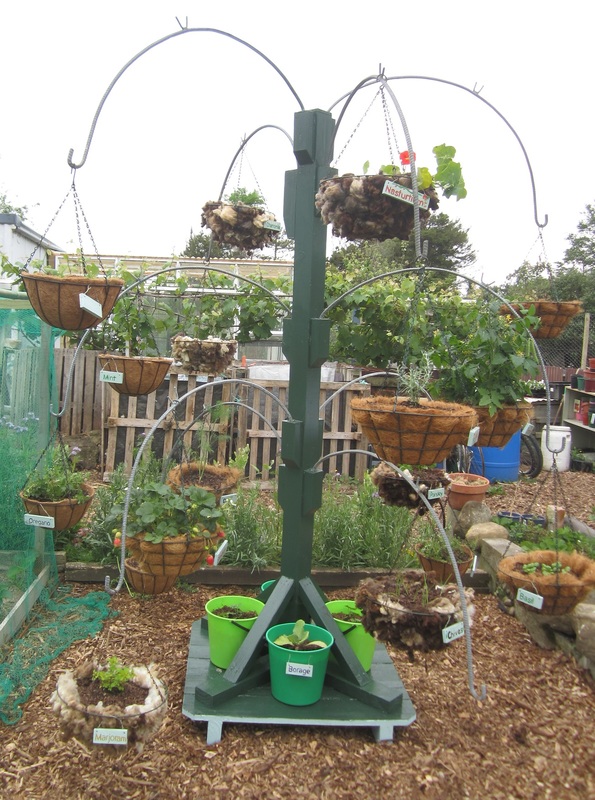
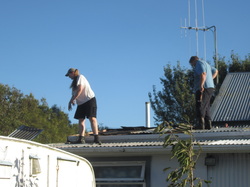
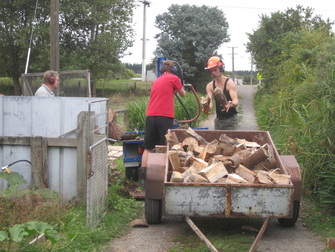
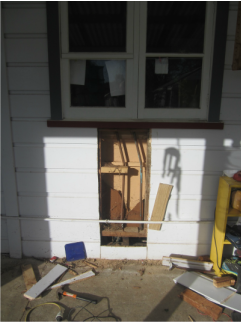
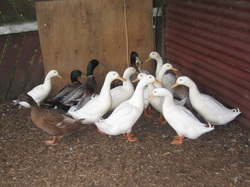
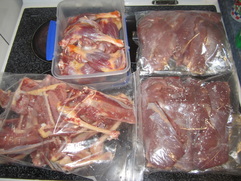
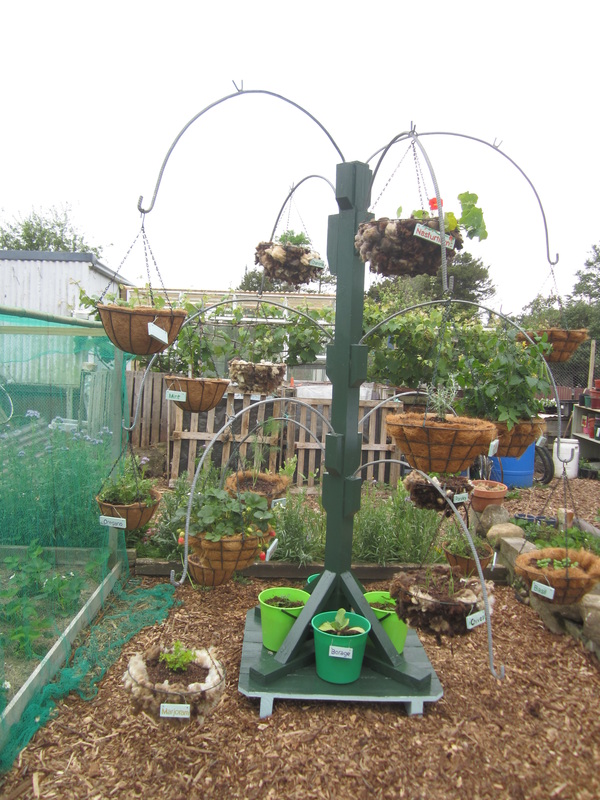
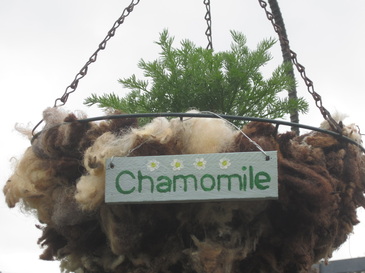
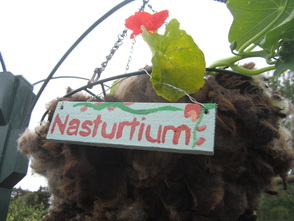
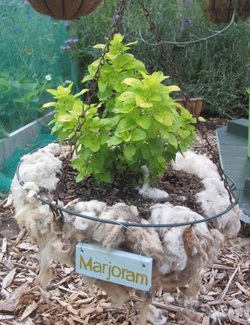
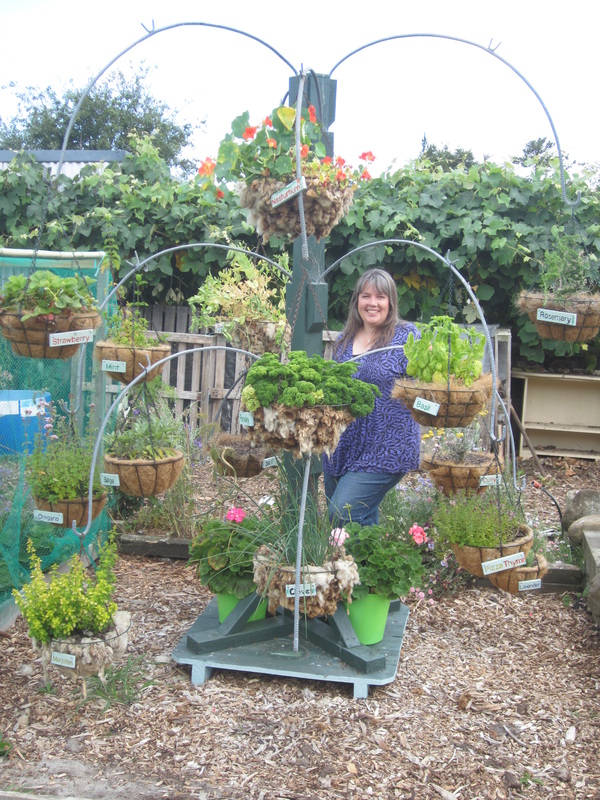
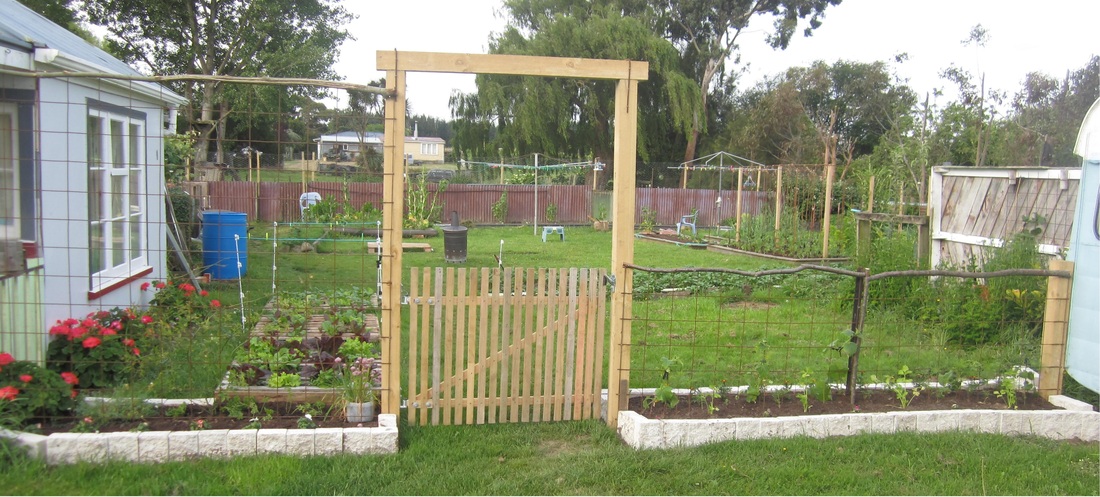
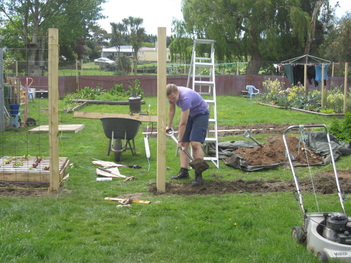
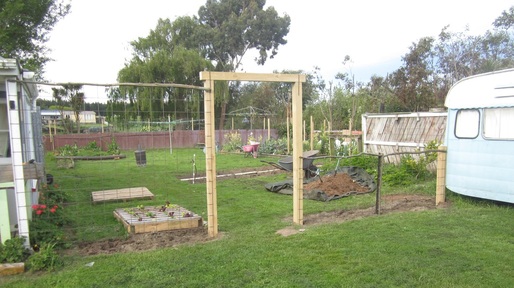
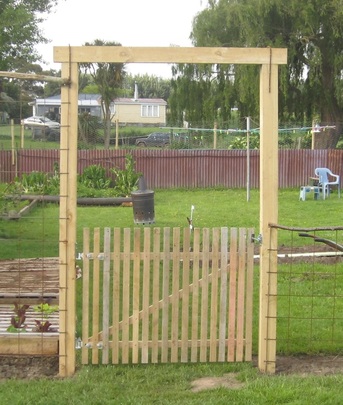
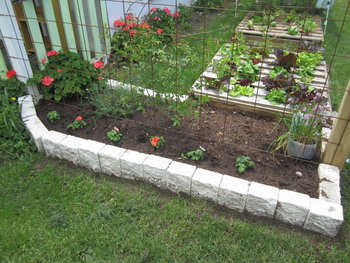
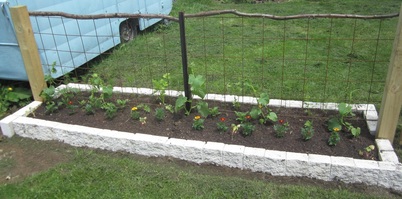
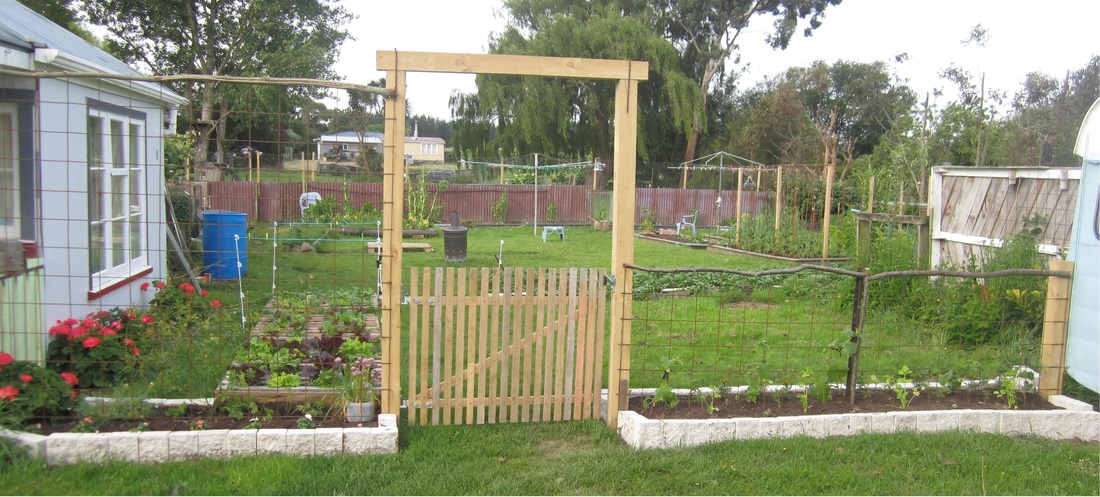
 RSS Feed
RSS Feed
